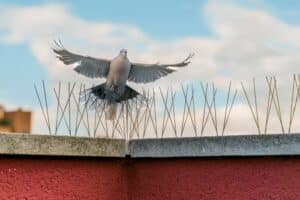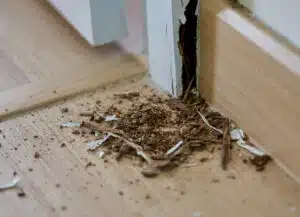Within the world of pest control, one of the single largest myths begins to be spread around more commonly as the weather turns cold and the snow starts falling. It goes something like this: “The weather is too cold for bugs and insects to be alive – I don’t have to worry about pest control over the winter, right?”
Wrong. At A-1 Exterminators, we’re here to tell you that this kind of inattention could lead to major pest issues in your home, including those that can fester and grow all winter long without you even noticing. Luckily, our pros are here to offer a wide range of residential pest control and exterminator services to help prepare you for this season. Let’s go over some of the important terms to be aware of here, plus how to prepare your home for the winter to ensure it’s protected from pests.
Basics on “Overwintering”
Generally during the later fall periods, several different kinds of pest invaders may begin trying to make their way into your home. They’re doing so for a few reasons, namely escaping the growing cold and locating reliable food sources as they do so. This behavior is called “overwintering.”
These pests can be of several different insect types, and can be at all stages of development – from full-grown adults down to larvae. And here’s the thing: Once they’ve made their way in, they aren’t particularly likely to leave of their own accord. Pests will find the comfort of your home far preferable to the dangers outside it, and will be a challenge to remove.
Dangers of Overwintering
The most common behavior from pests once they begin overwintering is to hibernate, and various pests have different habits here. Some will spend their time feeding and actively growing, which you may notice more easily throughout the home. Others, though, will lay low and wait for warmer periods before they begin reproducing significantly – these can be tougher to spot even for the most dedicated homeowner.
In addition, some insects product a chemical called glycerol, which helps them stay warm but can also leave trails in the home. Meanwhile, all pest forms look to nest in hidden areas like the walls, basement or attic – where, again, you might not find them until it’s spring and they’ve multiplied significantly.
Winterizing the Home
While there are steps you can take to address major pest invasions during winter, the best strategy is a preventive one. On top of a basic inspection and treatment from our professionals, here are some basic winterization tips that will keep pests from ever finding their way in to begin with:
-Leaks and moisture: Check the home and property for leaks, particularly in areas like the bathroom, attic and basement where water can be most damaging. Too much moisture can not only damage property, but also provide a breeding ground for certain pests. Also, leak areas large enough for moisture may also allow small pests to get inside. Be sure to check around window and door areas for any spots that need to be sealed.
-Clutter: Remove clutter both inside and outside the home, particularly near entryways. Pests will make their homes here otherwise.
-Piles: If you’ve been doing any leaf raking or have wood piles on your property, these need to be at least 20 feet away from the home itself. Pests may make their homes in these areas, and as such, they may migrate inside if they’re too close.
-Gutters: Clear your gutters of leaves and other debris, which helps with basic drainage and ensures no moisture buildups too close to the home where pests may harbor.
For more on preparing your home for the winter where pests are concerned, or to learn about any of our pest control services, speak to the pros at A-1 Exterminators today.



